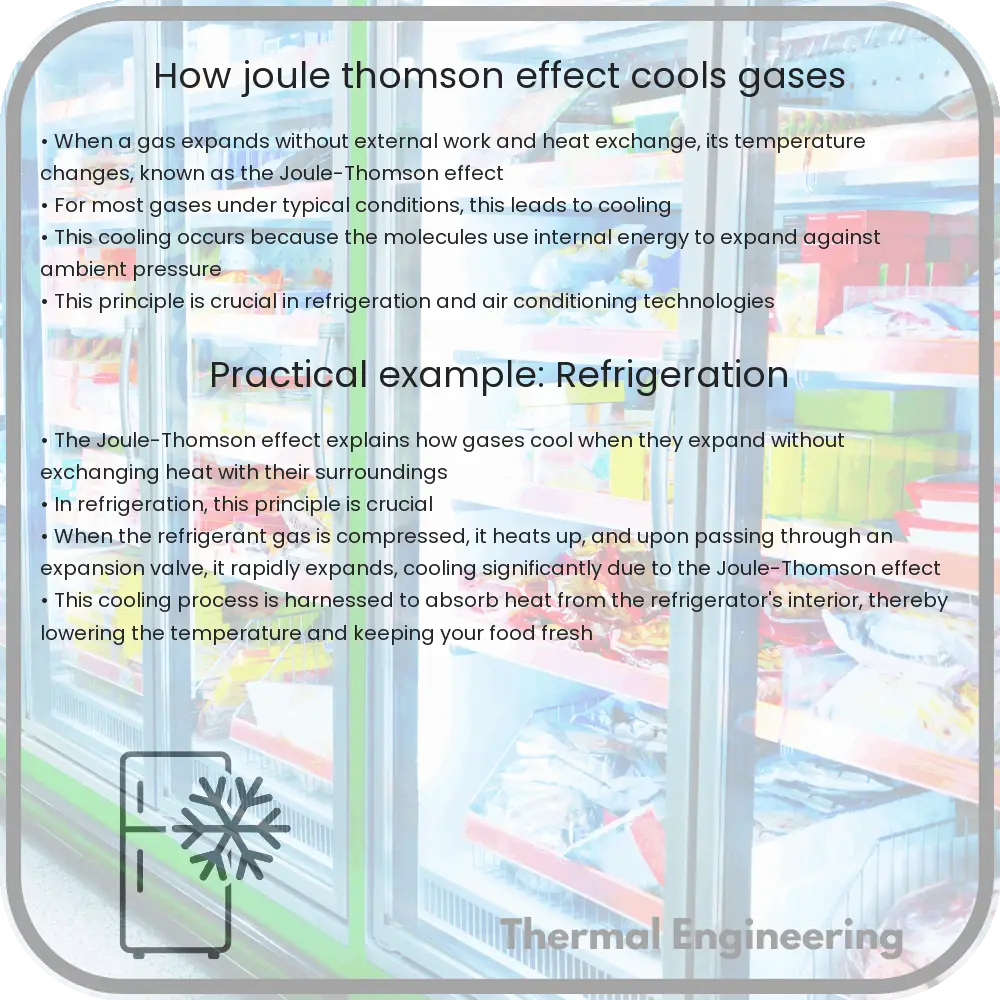Learn about the Joule-Thomson Effect, the thermodynamic principle behind gas cooling and heating during expansion, crucial for refrigeration and cryogenics.

Understanding the Joule-Thomson Effect: How It Cools Gases
The Joule-Thomson effect is a fundamental principle in thermodynamics that describes the temperature change in a real gas when it is forced through a valve or porous plug while keeping it insulated so that no heat is exchanged with the environment. This phenomenon is named after James Prescott Joule and William Thomson, who first discovered it in 1852. It’s a key principle in refrigeration and various industrial processes involving gas expansion and cooling.
How the Joule-Thomson Effect Works
At the heart of the Joule-Thomson effect lies the behavior of gases when they are compressed or expanded. When a gas is forced through a restriction, like a valve, its pressure decreases. This expansion can lead to either cooling or heating, depending on the type of gas and the initial conditions.
The effect is quantified by the Joule-Thomson coefficient, µ, which is defined as the change in temperature (dT) that results from a change in pressure (dP) at constant enthalpy (H), or total heat content:
µ = (dT / dP)H
This coefficient determines whether a gas cools or heats up when expanded at constant enthalpy. If µ is positive, the gas cools down; if µ is negative, the gas heats up.
Factors Affecting the Joule-Thomson Effect
- Type of Gas: Different gases have different Joule-Thomson coefficients at the same temperature and pressure, affecting how they heat or cool during expansion. For example, helium and hydrogen usually heat up (negative µ) under normal conditions, while gases like nitrogen and oxygen tend to cool down.
- Temperature: The initial temperature of the gas plays a crucial role. Each gas has an inversion temperature, above which the Joule-Thomson effect causes heating instead of cooling.
- Pressure: Higher pressures generally enhance the cooling effect for gases that have a positive Joule-Thomson coefficient below their inversion temperature.
Practical Applications
The Joule-Thomson effect is not just a theoretical principle but has practical applications in various fields:
- Refrigeration: It is used in gas liquefaction processes, where gases like ammonia are compressed and then allowed to expand to cool down. This process is critical in the production of liquefied gases for storage and transport.
- Heating Systems: For gases like hydrogen, where the effect produces heating at standard atmospheric conditions, it can be utilized in heating systems.
- Cryogenics: This effect is employed in cryogenic cooling systems, where gases such as nitrogen are expanded to produce very low temperatures needed in scientific experiments.
Understanding the Joule-Thomson effect is vital in designing and operating equipment that relies on controlled temperature changes of gases, whether for industrial, scientific, or consumer applications. Its thorough comprehension helps engineers and scientists innovate and maintain systems efficiently, making this phenomenon a staple concept in the fields of thermodynamics and refrigeration engineering.